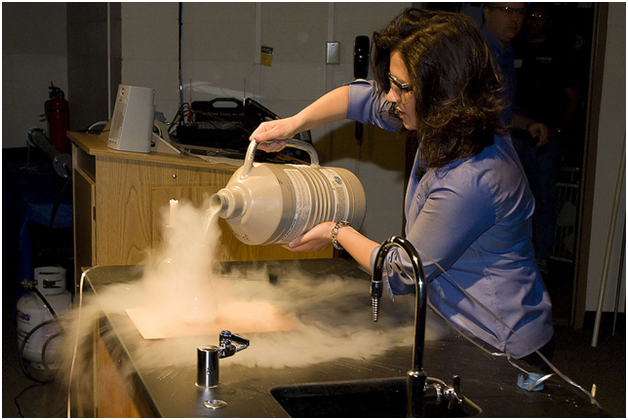Leidenfrost Effect
nitrogen_pic firewalker_pic

The Leidenfrost Effect is a phenomenon that occurs when there is a vary large temperature difference between two surfaces. This phenomenon is what allows people to be able to walk on red hot coals and remain unscathed. The physical phenomenon that allows this to be possible depends largely on the rate at which water on a person's feet are vaporized. When the Leidenfrost effect is successfully demonstrated by fire walkers, what is happening is a thin layer of vapor from the evaporating water is created beneath the feet of the fire walkers. This small layer of vapor slows the rate at which the fire walker’s foot conducts heat from the fire.
This same phenomenon occurs with liquid nitrogen. If liquid nitrogen is near its boiling point and is poured onto a table top. Small little bunches of liquid nitrogen can be seen forming and dancing across the table top (look at the edges of the white vapor in the picture they're small). This is occurring because the liquid nitrogen that encounters the table first is almost instantaneously evaporating, this evaporation creates a small vapor layer under the rest of the liquid nitrogen allowing it to dance for a suspended period of time across the table (the upper liquid nitrogen is not being heated by the table top directly, it slows the evaporation process). The nitrogen forms the little bunches because of the forces of attraction of the liquid nitrogen to itself and also some of the vapor forcing itself through the liquid nitrogen as a gas causing a separation of the liquid nitrogen into smaller segments.
